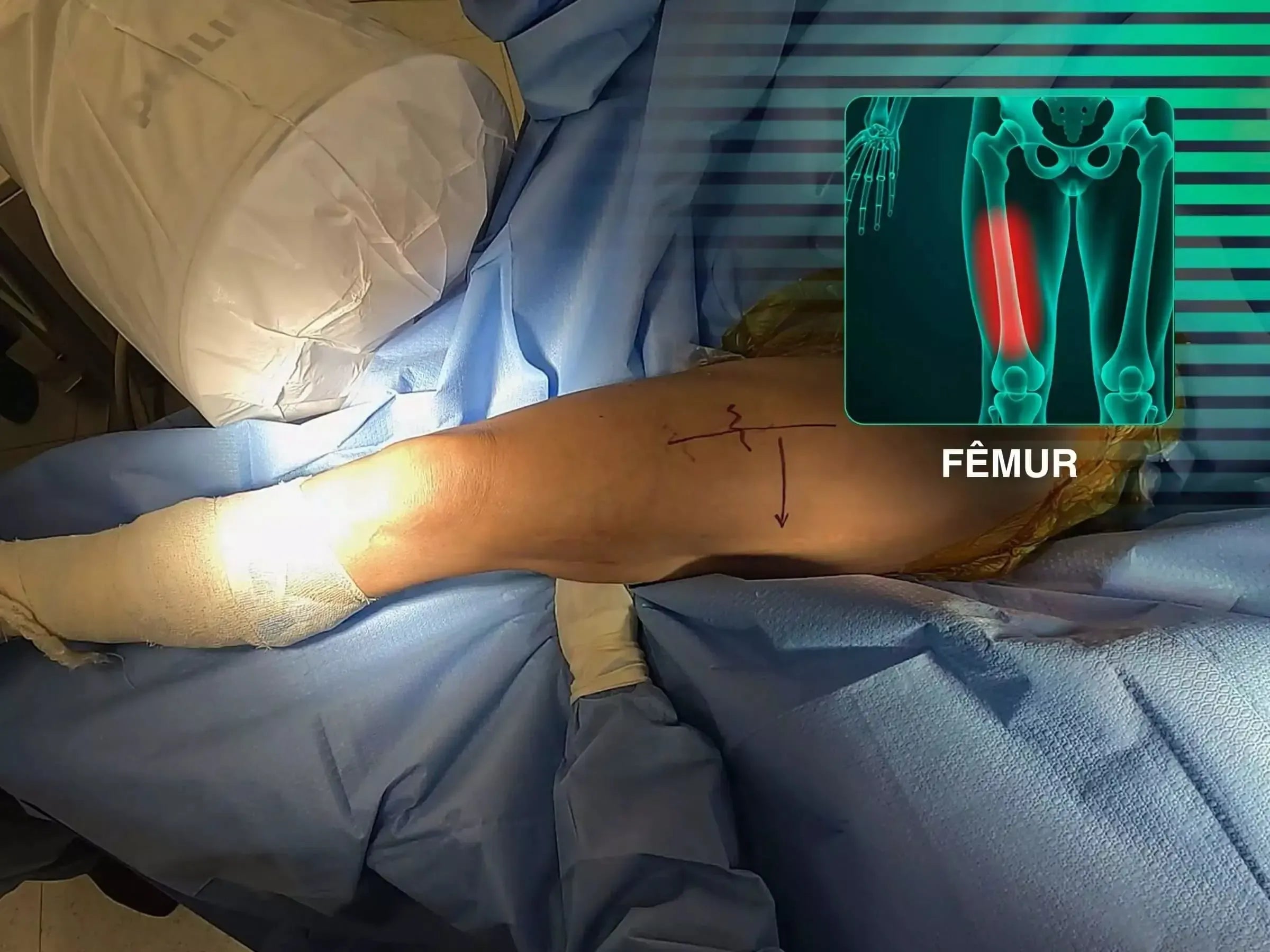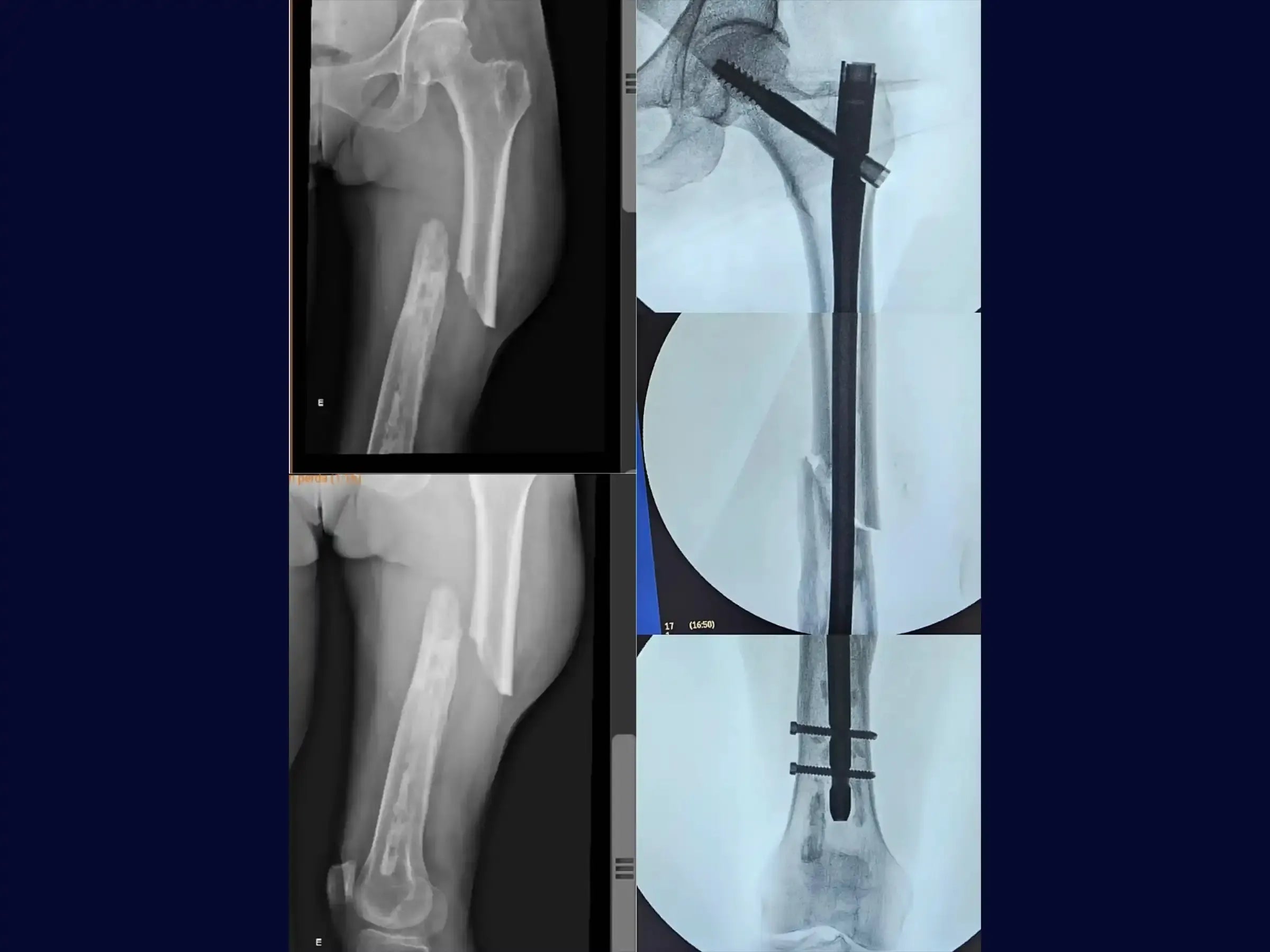

Diaphyseal Femur Fracture - Antegrade Cephalomedullary Intramedullary Nail
Perfect your technique with 4K surgical vision at every step of the fixation.

Dr. Savio Chami
Médico Ortopedista
Disponível em::





Videos em 4k
Dublagem Profissional
Escolher opções


Diaphyseal Femur Fracture - Antegrade Cephalomedullary Intramedullary Nail
Preço promocionalR$ 0,00

Dr. Savio Chami
Médico Ortopedista
Questions & Answers loading...
Descrição
Master the treatment of diaphyseal femur fractures, especially in cases of local bone fragility, with a focus on early rehabilitation. This training offers a technical immersion in osteosynthesis with an antegrade cephalomedullary intramedullary nail, emphasizing a minimally invasive approach without the use of a traction table.
Training Focus:
- Treatment of diaphyseal femur fractures, including in patients with bone fragility.
- Fixation technique with antegrade cephalomedullary intramedullary nail.
- Minimally invasive approach without a traction table, allowing free manipulation of the limb.
- Pre-surgical and intraoperative reduction maneuvers.
- Precise and efficient distal locking.
Detailed Content:
- Initial Planning and Reduction: Learn how to perform hip flexion maneuvers, external rotation, and internal rotation to plan the reduction before the surgical incision, allowing for free manipulation of the limb.
- Access and Accurate Insertion of the Guide Wire: Master the incision for the intramedullary rod and the introduction of the guide wire with favorable angulation, allowing for controlled curvature and ensuring flexibility and control in the initial direction. Check the introduction of the guide wire in the anteroposterior (AP) and lateral views.
- Opening the Medullary Canal and Reduction: Learn how to open the medullary canal using a soft tissue protector and introduce the olive wire. The fracture reduction is performed using the previously planned maneuvers.
- Optimized Medullary Canal Milling: Develop the skill to mill the medullary canal after the successful passage of the guide wire, seeking a bur size that provides a snug fit for better stability.
- Proximal Fixation with Cephalomedullary Nail: Use an 11-millimeter diameter cephalomedullary nail and create a lateral access for the fixation of the sliding screw. Perform synchronized measurement and positioning of the sliding screw, targeting the center of the femoral head in both AP and lateral projections, even in diaphyseal fractures.
- High-Precision Distal Locking: Master the distal locking technique using a skin mini-portal aligned with the bone tunnel to avoid difficulties with soft tissues.Learn to align the drill with the image intensifier, using the first drill as a guide for the second, ensuring parallelism and avoiding loss of the hole due to manipulations of the lower limb. Understand the importance of precision in the first drilling for the agility of the block and to avoid inadvertent insertion of the screw into an incorrect hole.
- Optimized Post-Operative: Prepare for a minimally invasive surgery that results in a comfortable post-operative experience, allowing full load and immediate rehabilitation as early as the day after surgery.
Included Material:
- Complete Technical PDF: Detailed educational document that describes the surgical technique for the treatment of diaphyseal femur fractures using a cephalomedullary antegrade intramedullary nail. Covers everything from initial planning and patient positioning to the stages of reduction, instrumentation, and closure.
Enhance your skills in the treatment of diaphyseal femur fractures. Enroll now and master advanced techniques with cephalomedullary antegrade intramedullary nails to optimize outcomes and the rehabilitation of your patients.

